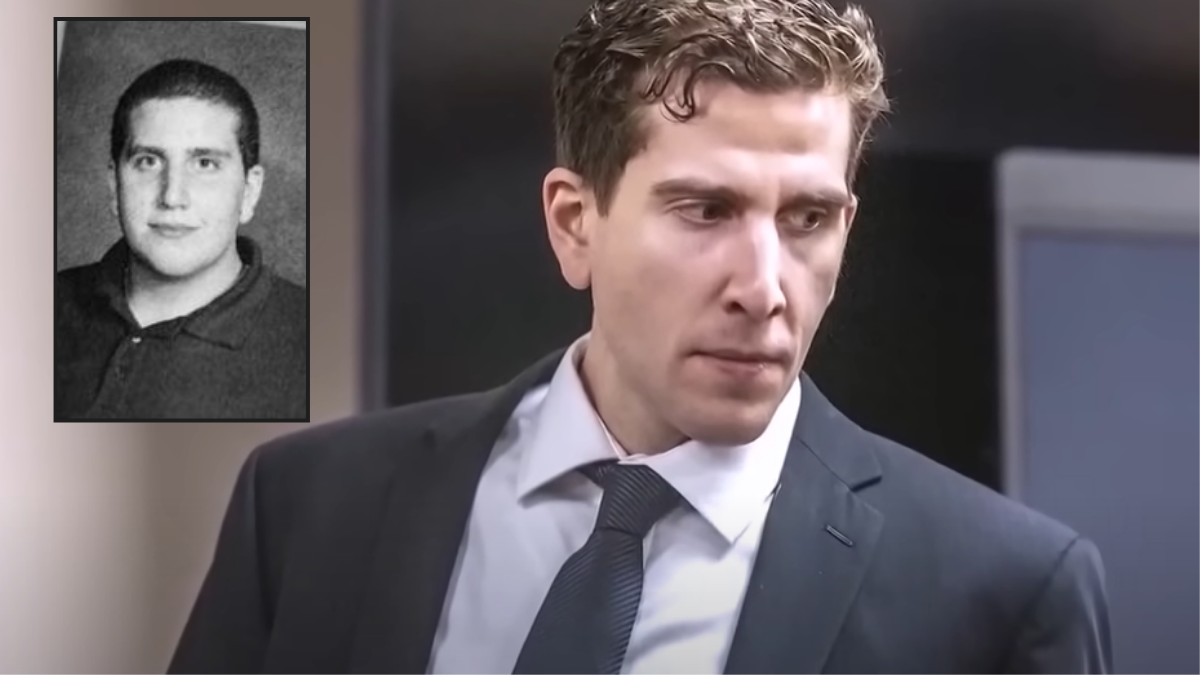It’s been a year since the four University of Idaho students, Madison Mogen, Kaylee Goncalves, Xana Kernodle, and her boyfriend, Ethan Chapin, were stabbed at home on the night of November 2022.
This was without a doubt the most high-profile quadruple homicide to have happened in the U.S. that year, and the attention on the case hasn’t waned, either among true crime adherents or in general, and probably won’t until the perpetrator behind the crime is imprisoned forever, or, sentenced to death.
Twenty-eight-year-old Bryan Kohberger is the man suspected of having committed the heinous deed. Nowadays, it’s much harder to commit murder and not get caught, especially a quadruple homicide as in this case. Judging by the evidence revealed thus far, the suspect, Kohberger, aided by his academic background and enduring personal interests, appears to have been playing 4D chess since the beginning — or thought he was, anyway, as though getting away with murder is nothing more than a high-stakes game and not a deplorable, wanton act of violence.
Kohberger’s personal, professional, and academic background

Bryan Kohberger grew up in a small town in the State of Pennsylvania with his parents, Michael and Maryann, and his two sisters, Amanda and Melissa. Except for Michael, who was a maintenance worker, the whole family seemed to have a professional predisposition for subjects within the field of psychology, although only Bryan actually went into the criminology branch. That’s perhaps the most fascinating – if one can be allowed to use such a word in the face of such tragedy – aspect of this case. Kohberger, as a Criminology Ph.D. student, has an educated perspective on how to navigate the different layers of a crime in a way that most civilians don’t.
A few years prior to the crime, Kohberger was employed at his mother’s workplace, the Pleasant Valley School District, as a security officer. There, as The Independent reported, he’d once helped save an elderly hall monitor’s life. In addition, it is said that Bryan had a habit of helping their neighbors mow their lawns. At some point in his life, he had aspirations of becoming a police officer.
If Kohberger’s a killer, his bullying past may have played a part in his motivations. Not to imply being bullied leads to murder, but in this case, it could indicate some long-term brewing resentment within Kohberger towards “popular kids,” and women particularly. It may be hard to believe judging by his recent pictures, but Kohberger used to be overweight and bullied in high school. Then, he lost about 100 pounds in his last year, which can’t have been healthy. In fact, it was probably partly due to his weed addiction, which he developed around that time and would at some point escalate into an addiction to heroin. Either way, some say it was after this transition that they noticed a change in his personality. Kohberger went from being bullied to being a bully (per TheDailyBeast). An acquaintance of Kohberger during his high school years told People:
“I know that he had anger issues and he would have outbursts and stuff. I never saw them face to face. My brother said that when Bryan would get angry with him, he would kind of gaslight him and get physically aggressive. Bryan never got physically aggressive with my brother, but he was kind of the person who would smash things or punch a wall or something like that. […] He was two years behind me. But then apparently when he lost the weight, some people are saying that he accepted apologies from the people who bullied him. And then other people are saying he bullied them right back.”
Kohberger would eventually go into rehab, and later earn an associate’s degree in psychology from Northampton Community College in 2018. He got a bachelor’s in 2020, and a master’s in criminal justice from DeSales University in 2022.
Those who knew him describe Kohberger as being undeniably smart. He was well aware of that himself, as he allegedly gained a habit of putting others down for being, as he perceived, less intelligent.
The most relevant pieces of evidence that we know pre-trial

Due to the gag order put in place, there is a lot that we don’t know about the State’s evidence against Bryan Kohberger. And that’s probably for the best, as the internet’s so-called true crime sleuths did largely more harm than good, as they blindly pointed fingers at people they speculated were suspicious before it became known who likely was driving that white Hyundai Elantra.
Yes, the car seen speeding away from the crime scene in the early hours of the morning was one of the first large pieces of evidence released to the public along with the plea for help identifying the exact vehicle and its owner. This same car was also found to have driven by that specific Moscow street multiple times before. Weeks after the murder, it became known that the car belonged to Kohberger, who months prior, had been caught in a traffic stop and chose to give the officer his phone number.
Which leads us to another damning piece of evidence: phone records. These showed that between 2:28 and 4:48 am, the speculated time of the crime, Bryan’s phone was off. Additionally, in the half a year leading up to the quadruple homicide, his phone pinged in that area twelve different times.
In terms of DNA evidence and the lack thereof, Kohberger’s criminology background is of note. If all outward signs are correct, he was thorough in his disposal of evidence, as he was found to have been wearing latex gloves and going around in the middle of the night throwing away bags of personal trash in multiple separate trashcans.
However, he might not have been thorough enough. Because the military leather knife sheath, which seemed to be purposefully left behind under Mogen’s body, had a singular trace of DNA on it: Kohberger’s. This trace is small enough that it implies it was left even after the suspect attempted to clean it. His possible intention was to use the supposedly DNA-less sheath to shift attention to a potential perpetrator with a military background.
The 18-page-long probable cause affidavit describes most of these pieces of evidence in detail. It also includes the summarized witness account from one of the two living housemates: “[…] she opened her door for the third time after she heard the crying and saw a figure clad in black clothing and a mask that covered the person’s mouth and nose walking towards her. [The witness] described the figure as 5’I0″ or taller, male, not very muscular, but athletically built with bushy eyebrows.” He walked right past her, leaving her behind frozen in fear and shock.
If found guilty of this abominable atrocity, Kohberger will either get life without parole or the death penalty.

